On September 29th Micki Colbeck snapped a photograph of a beautiful patch of Delicate Fern Moss (Thuidium delicatulum) in Hyde Park, Vermont and submitted it to the Vermont Atlas of Life on iNaturalist (VAL) immortalizing it as the 250,000 observation for the project. And observations kept coming. In 2018 alone, we had almost 2,400 naturalists contribute nearly 72,000 observations representing more than 3,100 species verified. Over 1,940 naturalist helped to identify and verify data. And we joined the more than 336,000 iNaturalists worldwide that submitted over 7.6 million observations in 2018!
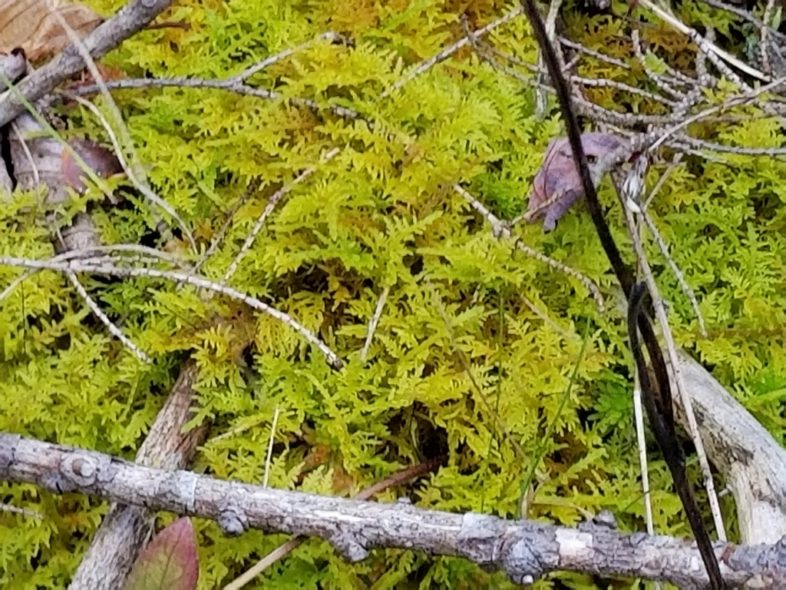
Delicate Fern Moss observation by Micki Colbeck. Click on the image to see it on the Vermont Atlas of Life at iNaturalist.
Research Grade Observations
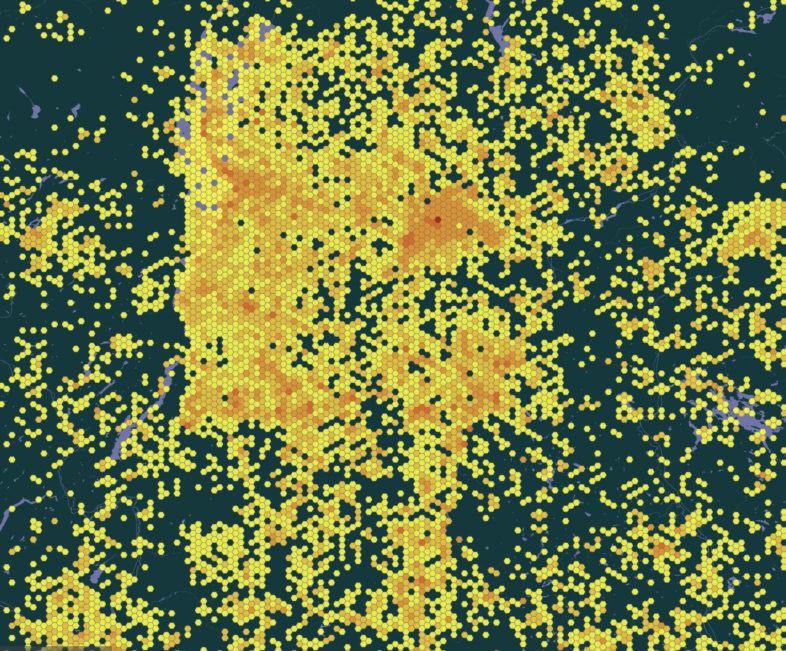
Can you pick out the State of Vermont by the research grade observations compiled on this map from GBIF? Hotter colors indicate higher numbers of observations in the cell.
An observation submitted to iNaturalist becomes what is called ‘research grade’ when it has: a date, latitude and longitude coordinates, photos or sounds, and the community agrees on the identification to species level. We have nearly 175,000 research grade observations comprising over 4,000 species in the iNaturalist Vermont database. These data are shared continually with the Global Biodiversity Information Facility, an international open data infrastructure that allows anyone, anywhere to access data about all types of life on Earth, shared across national boundaries via the Internet.
It takes a village for an observation to become research grade. Other naturalists that can identify species from the submitted images or sound recordings help make these observations into research grade data. We had 1,939 iNaturalists help identify observations in 2018. The top five all verified over 3,000 records each!
- Tom Norton 10,207
- Charlotte Bill 8,528
- Joanne Russo 4,076
- Mark Apgar 3,313
- Bryan Pfeiffer 3,110
Some New and Amazing Discoveries in 2018
Dragonflies and Damselflies (Odonata)
By most any measure, the 2018 field season of the Vermont Dragonfly and Damselfly Atlas (VDDA) was amazing. Volunteers added 1,438 records to our growing dataset, which now stands at 11,994 records. That includes the addition of a new species to the Vermont fauna in 2018. Nick Block found a Scarlet Bluet (Enallagma pictum) at a pond in southern Vermont on July 4, 2018 (a happy Independence Day, indeed). It became Vermont’s 46th known damselfly species (along with 104 known dragonfly species).
Moths (Lepidoptera)
Volunteer naturalists from across Vermont uploaded over 1,200 images of moths comprising more than 370 species during National Moth Week. This year’s count was bolstered by the Montpelier Bioblitz 2018, which kicked off the week. Moth experts Hugh McGuinness, Michael Sabourin, Joanne Russo, and others on the bioblitz team recorded nearly 320 moth species in Montpelier during the first two days. Nearly 130 volunteers added moth observations during the week.
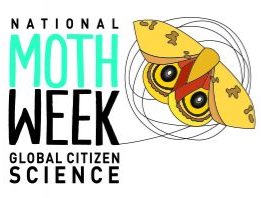 National Moth Week celebrates the beauty, life cycles, and habitats of moths. Held worldwide during the last full week of July, National Moth Week offers everyone, everywhere a unique opportunity to become a citizen scientist and contribute information about moths. Through partnerships with major online biological data depositories, like the Vermont Atlas of Life on iNaturalist, participants help map moth distribution and provide needed information on other life history aspects around the globe.
National Moth Week celebrates the beauty, life cycles, and habitats of moths. Held worldwide during the last full week of July, National Moth Week offers everyone, everywhere a unique opportunity to become a citizen scientist and contribute information about moths. Through partnerships with major online biological data depositories, like the Vermont Atlas of Life on iNaturalist, participants help map moth distribution and provide needed information on other life history aspects around the globe.
The fun doesn’t begin and end with National Moth Week. Here at VCE, with the aid of many volunteers across Vermont, we map moth distribution throughout the year. Since 2013, professional biologists and volunteer naturalists have contributed moth observations to the Vermont Atlas of Life through our iNaturalist project. Many of us turn on special lights in our backyards on summer nights to find hundreds of moths and other insects gathering on white sheets, hunt fields and forest for day-flying moths, and place rotten fruit bait out to attract other moths. Many of these moths can be identified from good photographs (although some are impossible without dissection and examination under a microscope). With today’s amazing digital photography technology, coupled with the newer Peterson’s Field Guide to Northeastern Moths and web sites like iNaturalist, BugGuide, Moth Photographers Group, or Moths of Eastern North America Facebook Group, moth watching (aka mothing) has become increasingly popular.
Moth watchers here in Vermont have added nearly 100 new species to the Vermont checklist via the Vermont Atlas of Life on iNaturalist and have documented 1,248 species across the state so far. What’s even more amazing is that we’ve recorded over 32,000 observations, which helps us understand their phenology, habitat use, and range in Vermont like never before.
Since the 1995 landmark publication Moths and Butterflies of Vermont: A Faunal Checklist, nearly 400 new moth species have been found in Vermont thanks to the tireless efforts of both professional and amateur lepidopterists. Preliminary results show that there are now over 2,200 species of moths known in Vermont. And, there are likely many more awaiting our discovery.
We encourage you to add your photographs of moths, too. Finding moths can be as simple as looking for them flying about during the day, or leaving a porch light on and checking it after dark. Serious moth aficionados use special lights and baits to attract them. Check out this short introduction on how to start mothing. It’s easy and fun!
Moth observations by superfamily from the Vermont Atlas of Life iNaturalist project overall (updated to 1/2/2019) and during Moth Week 2018 (July 21-29). Click on any research grade number to see a gallery and listing of all the research grade species for each superfamily at iNaturalist.| Superfamily | VAL Observations | VAL Research Grade Species | Moth Week 2018 Observations | Moth Week 2018 Research Grade Species |
|---|---|---|---|---|
| Micropterigoidea (Mandibulate Archaic Moths ) | 0 | 0 | 0 | 0 |
| Eriocranioidea (Eriocraniid Moths) | 0 | 0 | 0 | 0 |
| Hepialoide (Ghost Moths and Swift Moths) | 16 | 2 | 5 | 1 |
| Nepticuloidea (Pygmy Leafminer Moths) | 15 | 5 | 4 | 2 |
| Adeloidea (Fairy Moths and Allies) | 69 | 6 | 5 | 4 |
| Tineoidea (Bagworms, Clothes Moths and Allies) | 113 | 15 | 6 | 4 |
| Gelechioidea (Curved-horn Moths) | 974 | 72 | 78 | 19 |
| Copromorphoidea (Fruitworm Moths) | 19 | 3 | 0 | 0 |
| Yponomeutoidea (Ermine Moths and Allies) | 145 | 12 | 15 | 3 |
| Cossoidea (Carpenter, Leopard, Goat, Clearwing Moths & Allies) | 17 | 1 | 1 | 1 |
| Tortricoidea (Leafroller Moths) | 2700 | 186 | 233 | 54 |
| Zygaenoidea (Flannel, Slug Caterpillar, Leaf Skeletonizer and Allied Moths) | 338 | 13 | 17 | 4 |
| Pyraloidea (Pyralid and Crambid Snout Moths) | 3968 | 156 | 282 | 57 |
| Pterophoroidea (Plume Moths) | 306 | 11 | 24 | 1 |
| Drepanoidea (Hook Tip Moths and Allies) | 495 | 8 | 27 | 6 |
| Geometroidea (Geometrid and Swallowtail Moths) | 8348 | 187 | 318 | 57 |
| Mimallonoidea (Sack-bearer Moths) | 0 | 0 | 0 | 0 |
| Bombycoidea (Hawk/Sphinx, Silk, Emperor and Allied Moths) | 2070 | 38 | 55 | 13 |
| Noctuoidea (Owlet Moths and Allies) | 16452 | 542 | 938 | 171 |
| TOTALS: | 36,045 | 1,257 | 2,008 | 397 |
Bumble Bees (Bombus)
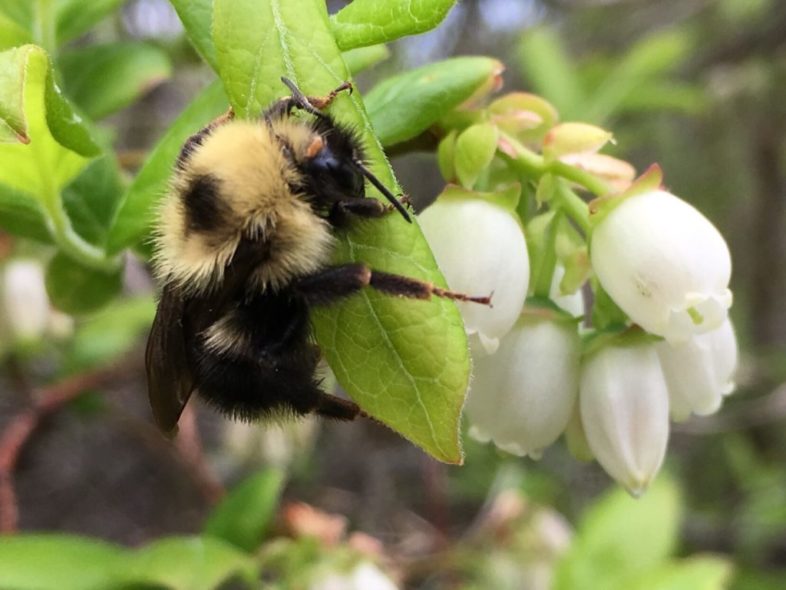
Fernald’s Cuckoo Bumble Bee on highbush blueberry. See https://www.inaturalist.org/observations/12807025.
Fernald’s Cuckoo Bumble Bee (Bombus fernaldae) hadn’t been seen in Vermont since 1963, but was rediscovered this year in two places. VCE research associate, Leif Richardson, found it during a bumblebee survey in the Missisquoi National Wildlife Refuge in Swanton. Spencer Hardy, a member of the VCE Vermont Bumble Bee Atlas team, found five drones just a few days later in Franklin County. There are just two historic records for this bee in Vermont—a specimen from 1936 in Whittingham and a second from Island Pond in 1963. Fernald’s bumblebee is fairly common elsewhere in the region—it’s been spotted in Quebec, New York, and Maine—but confirming the bee is still found in Vermont was key.
Observers added 16 records across Vermont for the State Threatened Yellow-banded Bumble Bee (Bombus terricola). Populations of this species appear to be rebounding somewhat. Once common and found throughout the northeast and south into Georgia, B. terricola populations have experienced a dramatic decline over the past 15 years.
Overall, 95 observers added 376 bumble bee observations for 12 species across the state.
We published a new study examining 100 years of Vermont bumble bee records revealing that almost half of Vermont’s species, which are vital pollinators, have either vanished or are in serious decline. After conducting the state’s most extensive search for bumble bees, and combing through historical records from museum collections, our team has concluded that four of Vermont’s 17 bumble bee species appear to have gone extinct. The study, led by researchers from the Vermont Center for Ecostudies (VCE) and the University of Vermont (UVM), was published in the Journal of Insect Conservation. You can also read more about it on the VCE Blog.
You can learn more about these species and all of our work on them at the Vermont Bumble Atlas site at the Vermont Atlas of Life.
Lady Beetles (Coccinellidae)
Since at least the 1980s, native lady beetles that were once very common have become rare or have even been lost. Meanwhile, introduced lady beetles from other parts of the world been spreading. In agricultural habitats, lady beetles prey on many pests including aphids and other insects. We know that 15 native lady beetle species have not been found in the state since at least 1976. But little has been done to allow us to understand and monitor their status across the state.
We have begun to assemble occurrence data for lady beetles of Vermont derived from an historical publication from 1976 that contained first and last dates (month-day) and counties where they were collected, records from the Lost Ladybug Project, and observations shared at the Vermont Atlas of Life on iNaturalist. All of these records have been uploaded to the Global Biodiversity Information Facility (GBIF). We now have nearly 1,000 records representing 45 lady beetle species (six introduced) from collections across the continent, including the Archbold Biological Station Arthropod Collection in FL, University of Alberta E. H. Strickland Entomological Museum, University of Michigan Museum of Zoology, BugGuide.net, Vermont Atlas of Life on iNaturalist, Lost Ladybug Project, and University of Vermont. Uniting Vermont data from far and wide shows the power of a data gathering infrastructure like VAL and GBIF.
Most records come from iNaturalist users like you contributing photographs of these beetles. We have 484 observations comprising 20 verified species. In 2018 alone, 13 verified species were documented from 128 observations. Observers like you have contributed some unique records:
- Undoubtable Lady Beetle (Brachiacantha indubitabilis) – the first and only state record was found in 2014 and reported to BugGuide.net.
- Hieroglyphic Lady Beetle (Coccinella hieroglyphica kirbyi) – the last record in Vermont was reported in 1969 until one was reported to VAL on iNaturalist in 2017.
- Mountain Lady Beetle (Coccinella monticola) – the first and only state record was reported to VAL on iNaturalist in 2017.
This year, we hope you’ll search for lady beetles near you and report them to VAL on iNaturalist. Here’s a couple of resources to help you identify them too: Discover Life pictorial key and a the Field Guide to Ladybugs of North America app for iphone.
Plants
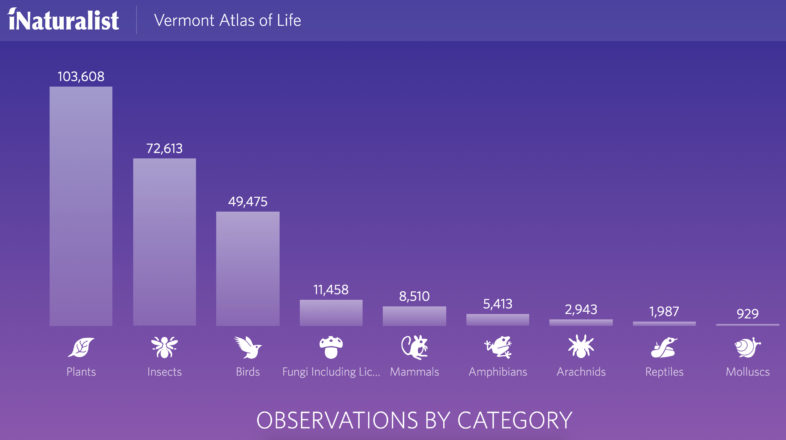
Plants clearly comprise the bulk of observations on the Vermont Atlas of Life at iNaturalist and 2018 was no exception. We had 1,462 iNaturalists add 26,333 observations comprising 909 verified species of plants in 2018! There were 152 introduced species reported and about 35 species that are of conservation concern.
Charlie Hohn contributed the most with 5,395 observations, and he also had the most species with 634. Helping to verify records is another important part of the data. Tom Norton identified 8,966 plant records! He was followed by Charlotte Bill with 5,404 and Charlie Hohn with 2,654 identifications. Remarkable work!
Explore the 2018 Photo-Observation of the Month Winners
Each month, iNaturalists ‘fav’ any observation they like as a vote for the iNaturalist Vermont photo-observation of the month. Check out these awesome winners from 2018 and learn a little bit about the natural history of each organism.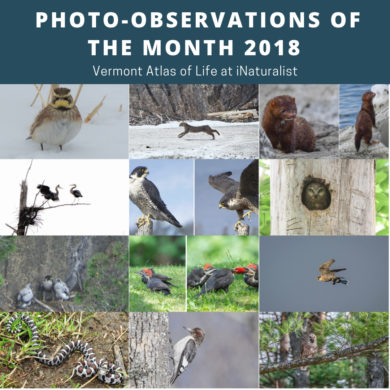
We hope you’ll join the project and help us make this biodiversity database grow. Make the Vermont Atlas of Life at iNaturalist your New Year’s resolution in 2019!
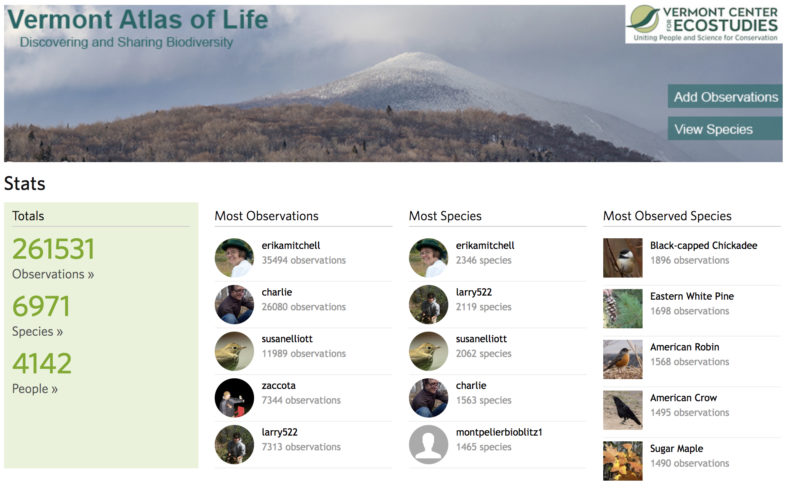
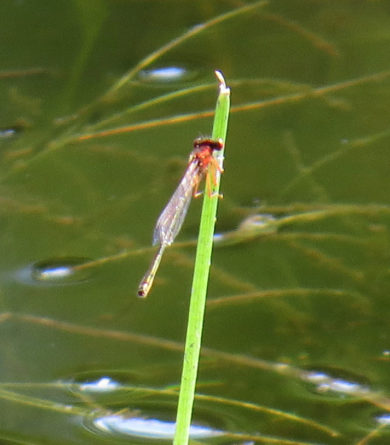
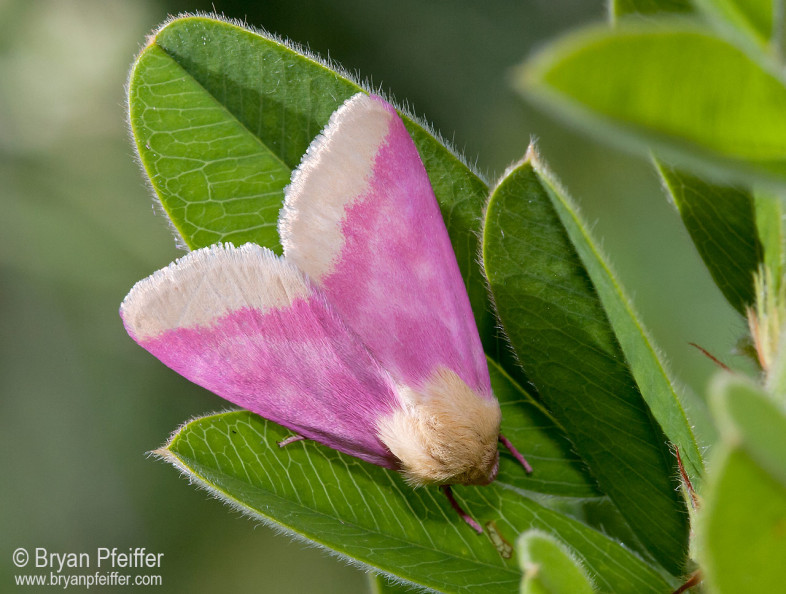
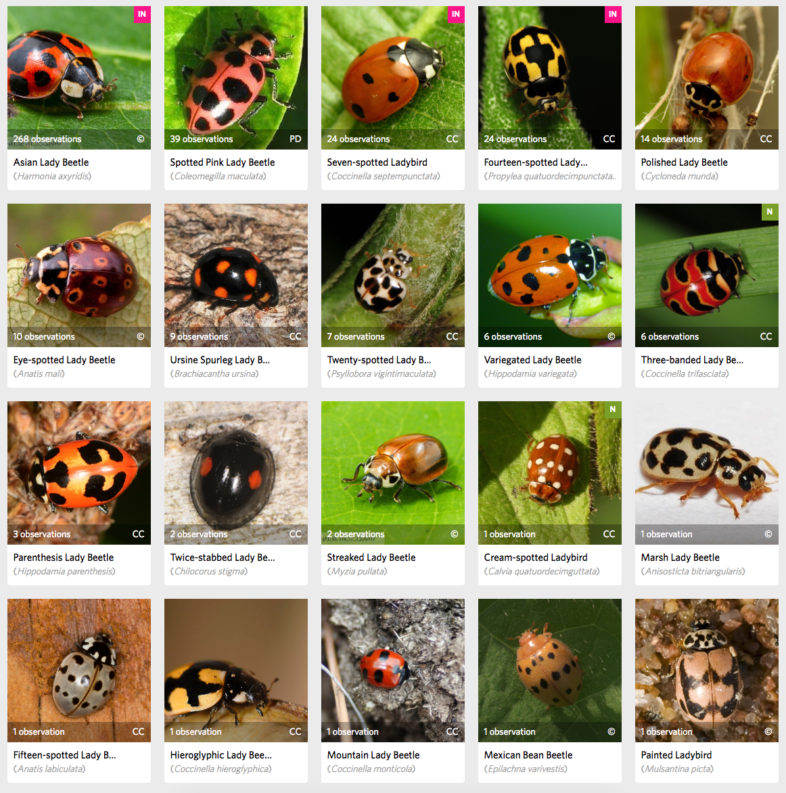

Very cool…………….